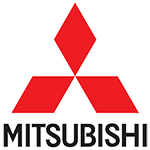Need help with an Air Filter?

What keeps your air clean, your home energy efficient, and HVAC system working smoothly?
Air filters... and more importantly CLEAN air filters! Your filter might passively collect dust, bacteria, and other pollutants, but that collection takes a toll on any filter, whether washable or the standard replaceable. If your filter is blocked up, it means your indoor air quality will suffer and your HVAC equipment, if it doesn’t break, won’t work as efficiently as before. As we’re moving into spring and through summer, you may want to check on your filters to make sure they're not harming your home.
If you find you need to replace them, Younits has a wide selection to choose from – but how do you know which ones to get? Your first mode of action should be to check the user’s manual for your equipment to make sure you’re buying a compatible filter. If you’re getting a new system, or are just interested in what your options are, below is a brief overview of some different types of filters and some metrics to distinguish one from another.
Although there are many types of filters out there, four common varieties are disposable, washable, pleated, and odor control.
Disposable Filters
Disposable filters are those filters which are meant to be thrown away after they accumulate enough particulate. Often made of spun glass, disposable filters should generally be replaced monthly during times of high usage, such as the summer and winter months.
Washable Filters
Washable filters are a lot more expensive than disposable ones, but can be simply washed with warm water every month to reinvigorate your system. These filters tend to be made of metal, making them easy to clean and durable, often lasting up to 5 years with regular usage.
Pleated Filters
In circumstances where substantial dust holding is required, such as industrial applications, pleated filters might be the way to go. By folding the filter media over itself (i.e. creating pleats), pleated filters have much more surface area than traditional flat filters. As technology improves, pleated filters continue to increase in surface area while minimizing the filter’s overall dimensions.
Odor Control Filters
If your indoor air suffers from bad smells, you may want to consider an odor control filter. Often filled with carbon, odor control filters neutralize odor-causing elements in the air without sacrificing standard particulate filtration.
Air Filter Specifications
In addition to the specific application, you will also want to look at a few different specifications on a given filter.
The most common, and often most important, is the Minimum Efficiency Reporting Value (MERV rating). This is a rating system created by ASHRAE, the American Society of Heating, Refrigeration, and Air Conditioning Engineers, to easily understand and compare filter efficiency.
The rating is the result of three measurements: arrestance, dust spot efficiency, and dust holding capacity. Arrestance is the ability of the filter to remove synthetic dust in controlled conditions. Dust spot efficiency assesses the ability of the filter to remove atmospheric dust from the air. Dust holding capacity is just as it sounds – how much dust a filter can hold.
These three measurements result in a value that ranges from 1 to 20, with higher ratings representing higher efficiencies. Typical disposable, spun glass filters tend to have MERV ratings around 4, enough for standard residential needs, such as filtering out pollen, dust mites, and other particles greater than 10 micrometers wide. Pleated filters, which we mentioned are typically more useful in industrial or commercial settings, often reach a MERV rating of 8, blocking particles as small as 3 micrometers wide (think mold spores). Filters with a MERV rating over 13 are generally reserved for hospital or clean room use.
UL Listing
For your safety, you might be interesting in confirming if the filter is UL (Underwriters Laboratories, Inc.) listed. A UL listing on HVAC filters indicates that the filter will not produce flames or excessive sparks when subjected to a flame exposure test. While previously there were several degrees of UL classification, the agency has recently simplified the listing to a single “UL Classified” designation indicating your filter will meet most local and state safety requirements.
Filter Dimensions
One final tip is to make sure you’re looking at the right dimensions for your filter. Some filters are only listed in their nominal size, a standardized size that might not match the exact size of the filter.
Typically the measurements are not off by much, but it’s worth double check what dimensions you’re looking at when shopping before comparing them to any self-measurements. If you don’t know the nominal size of your filter, you will likely be able to find it in the housing equipment’s user’s manual.


